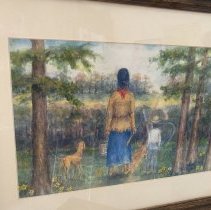Creator Record
Metadata
Name |
McCrocklin, Claude |
Related Records
-
Painting - ALLIGATOR HUNT The dugout canoe was the tradition in the Southeast Woodland culture. The Caddo, like other groups, supplemented farming with gathering, fishing, and hunting. Alligators were an abundant game source.
McCrocklin, Claude
Record Type: Object
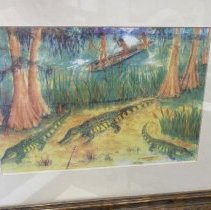
-
Painting - BUFFALO HUNT The rider appears to be from one of the Plains nations. Most Native people painted their horses, and the meaning of the symbols varied from one group to another. The stripes are coup marks, indicating past successes. Other marks likely seek to promote success in the current hunt.
McCrocklin, Claude
Record Type: Object
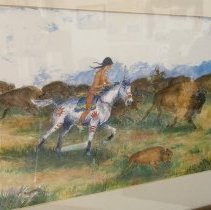
-
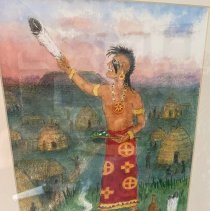
-
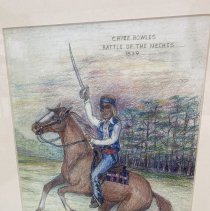
-
Painting - CLOVIS CULTURE SCENE FROM 12,000 YEARS AGO At this time, the climate all across North America was much colder than today. People lived in small family bands and made their living by hunting and gathering. Much of their game was from now-extinct animals such as the mammoth, whose tusks are used to frame the doors in this scene.
McCrocklin, Claude
Record Type: Object
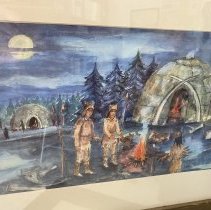
-
Painting - FACIAL TATTOOS Facial tattoos were very common among a large range of Native American cultures, including the Caddo. They could mark things like tribal group, accomplishments, and stage in life. They were banned in the early twentieth century but are being revived today, especially among women.
McCrocklin, Claude
Record Type: Object

-
Painting - FIVE HORSES RUNNING Horses became a self-sustaining population in Texas after the Alonso de León expedition brought 700 of them to the area. The Native people quickly adopted them and became master horsemen.
McCrocklin, Claude
Record Type: Object

-
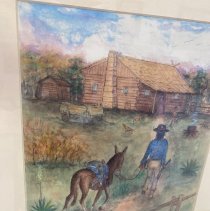
-
Painting - LOG HOUSE A typical Cherokee homestead when they were in East Texas from 1819 to 1839 would have looked like this. They had adopted log cabins, rail fences, European clothes, horses, and chickens before fleeing their homeland in the Southeast.
McCrocklin, Claude
Record Type: Object
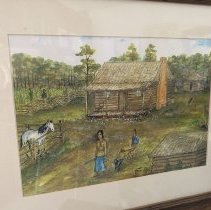
-
Painting - SOLDIERS AND NATIVES WITH AN AMERICAN FLAG During their boundary dispute between 1783 and 1795, Americans and Spanish in the Southeast gave Native leaders symbols like uniform coats and flags. The Natives would bring these out when meeting with soldiers to indicate peaceful intent.
McCrocklin, Claude
Record Type: Object
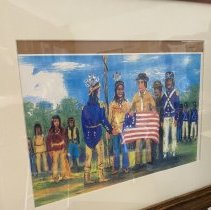
-

-
Painting - VILLAGE SCENE A typical Caddo village day from around the time of European contact: women treating hide, pounding corn for cornmeal, and harvesting corn while their children play. The Caddo tanning process made their leather black.
McCrocklin, Claude
Record Type: Object

-
Painting - WOMAN AND CHILD WITH SHOTGUN, FISHING POLE, AND BASKET This scene from the late nineteenth or early twentieth century represents the way Native people of the Southeast Woodlands culture supplemented their farming sources of food by hunting, fishing, and gathering.
McCrocklin, Claude
Record Type: Object
